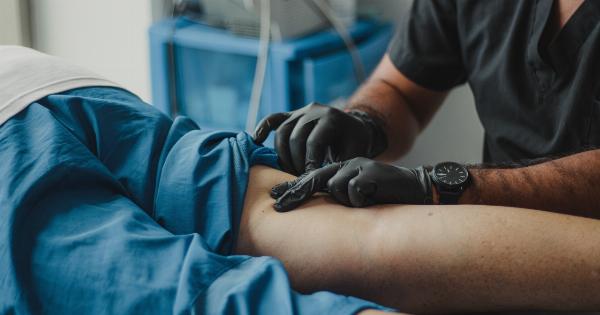Our body is a complex machine and sometimes it requires special care and attention to keep it running smoothly. Orthopedic interventions are one such form of care that many people require.
Orthopedic problems can range from injuries, congenital defects, wear and tear, to degenerative diseases that require surgical procedures to alleviate pain, restore mobility, and improve overall function. If you’re wondering when to expect orthopedic interventions, this guide will help you understand when they’re necessary and how to prepare for them.
When Should You Consider Orthopedic Intervention?
Orthopedic interventions may be necessary if you experience any of the following symptoms:.
- Chronic pain in joints, muscles, or bones
- Difficulty moving, standing, or walking
- Limited range of motion or flexibility
- Swelling, bruising, or stiffness in affected areas
- Numbness, tingling, or weakness in limbs
If you have any of these symptoms, it’s important to seek medical advice from an orthopedic specialist who can determine the best course of treatment for your specific condition.
Types of Orthopedic Interventions
Orthopedic interventions can range from non-surgical treatments to more invasive surgical procedures. Some common types of orthopedic interventions include:.
- Physical therapy
- Braces or splints
- Joint injections
- Arthroscopic surgery
- Joint replacements
- Spinal fusion
- Fracture repair
- Orthobiologics therapy
The type of intervention recommended will depend on the severity of your condition, the location of the injury, and any underlying health concerns.
Preparing for Orthopedic Interventions
If your orthopedic specialist has recommended an intervention, there are several steps you can take to prepare for it:.
- Ensure you fully understand the procedure and its benefits and risks
- Ask your specialist about any pre-operative tests or procedures that need to be done
- Arrange for transportation to and from the intervention site, and any post-intervention appointments
- Prepare your home for your recovery, including organizing assistive equipment and arranging for any necessary help
- Follow your orthopedic specialist’s pre-operative instructions, including any dietary or medication requirements
Recovery Time and Post-Intervention Care
The recovery time and post-intervention care required will depend on the type of intervention you undergo.
Some interventions, such as arthroscopic surgery, may only require a few weeks of healing time, while others, such as joint replacement surgery, may require several months of rehabilitation and physical therapy.
Regardless of the type of intervention, it’s important to follow your orthopedic specialist’s post-operative instructions carefully. This may include:.
- Wearing a brace or splint to support the affected area
- Taking prescribed medication to manage pain and inflammation
- Attending physical therapy sessions to improve flexibility and strength
- Following a specific diet or exercise regimen to promote healing and recovery
Be sure to attend all follow-up appointments with your orthopedic specialist to monitor your progress and ensure you’re healing properly.
Conclusion
If you’re experiencing joint pain or mobility issues, it’s important to seek medical advice from an orthopedic specialist who can determine whether you require an intervention.
With the proper diagnosis and treatment, you can expect to regain mobility, reduce pain, and improve your overall quality of life.



























